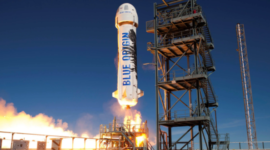The concept of supersonic flight—traveling faster than the speed of sound—has fascinated engineers, scientists, and the public for over a century. The term “supersonic” refers to speeds exceeding Mach 1, which at sea level is about 1,235 km/h (767 mph). The pursuit of such speeds began in the military sector during the mid-20th century, driven by the desire for faster fighter jets and reconnaissance aircraft, but it was not long before visionaries sought to bring this technology to civilian passengers. The most famous outcome of these ambitions was the Concorde, jointly developed by Britain and France, which entered service in 1976 and became an icon of luxury and technological prowess. The Concorde could cruise at Mach 2—roughly 2,180 km/h—cutting transatlantic travel time from London to New York to under 3.5 hours. However, despite its engineering brilliance, the Concorde faced persistent challenges: operating costs were extraordinarily high, fuel consumption was immense, ticket prices were only accessible to the wealthy, and the aircraft was restricted from flying supersonic over land due to the disruptive sonic booms it produced. After a series of economic and safety factors—including the tragic crash of Air France Flight 4590 in 2000—Concorde was retired in 2003, marking the end of the supersonic passenger era. Since then, the aviation industry has been almost entirely subsonic, focusing on improving efficiency, safety, and environmental performance rather than outright speed.
Today, more than two decades after Concorde’s retirement, supersonic passenger flight is experiencing a renaissance driven by technological advances, shifting regulatory landscapes, and renewed commercial interest. One of the most prominent players in this revival is Boom Supersonic, an American company headquartered in Denver, Colorado. Boom has been working on the Overture, a planned Mach 1.7 commercial airliner designed to carry 64–80 passengers over a range of about 4,250 nautical miles. Unlike Concorde, Overture is being designed from the ground up with sustainability in mind, using 100% Sustainable Aviation Fuel (SAF) and incorporating aerodynamic innovations to reduce both drag and sonic boom intensity. In early 2025, Boom achieved a major milestone with its XB-1 demonstrator—nicknamed “Baby Boom”—becoming the first independently developed jet to exceed the speed of sound. The XB-1 serves as a testbed for critical technologies such as advanced composite materials, efficient delta-wing shaping, and new low-noise inlet designs. Boom has announced that its Overture will enter service by 2029, with major airlines including United Airlines and American Airlines placing pre-orders, signaling strong market interest.
Another major development pushing the supersonic envelope is NASA’s X-59 QueSST (Quiet SuperSonic Technology) aircraft, developed in collaboration with Lockheed Martin. The X-59 is an experimental jet designed to produce a “sonic thump” rather than a disruptive boom, a breakthrough that could pave the way for regulatory changes allowing supersonic overland flights. This is significant because, since 1973, the United States has banned commercial supersonic flights over its territory due to noise concerns. In June 2025, a new U.S. executive order indicated that this ban could be lifted by 2027, provided that aircraft meet strict noise certification standards. If successful, the X-59’s low-boom technology could enable flights such as New York to Los Angeles in under three hours without disturbing people on the ground, dramatically increasing the potential market for supersonic travel.
Several other companies and countries are also competing in the supersonic space. Spike Aerospace is developing the S-512, a Mach 1.6 business jet with a unique windowless design; passengers will instead enjoy high-resolution screens projecting real-time external views or curated scenic imagery. Exosonic, another U.S. startup, is targeting a Mach 1.8, 70-seat airliner aimed at offering ticket prices comparable to long-haul business class. Internationally, China’s state-owned COMAC is working on the C949, a Mach 1.6 jet projected for the late 2040s that could connect London and New York in under three hours. Russia is developing supersonic business jets capable of Mach 1.8 speeds, while Japan’s aerospace agency JAXA, along with Mitsubishi, Kawasaki, and Subaru, is collaborating on a 50-seat supersonic airliner that aims to cut fuel consumption and noise dramatically compared to Concorde. Virgin Galactic, primarily known for space tourism, has also revealed concepts for a Mach 3, 19-passenger aircraft, although timelines and technical details remain vague.
While the technical ambition is impressive, supersonic flight faces persistent challenges. The most pressing are noise, fuel efficiency, environmental impact, and economic viability. Sonic booms are not just loud; they can cause structural vibrations and public opposition. This is why low-boom designs, like those of the X-59 and the Gulfstream X-54 concept, are considered critical. On the fuel side, supersonic aircraft inevitably consume more fuel per passenger-kilometer than subsonic ones, due to the energy required to overcome drag at high speeds. The widespread adoption of SAF can offset carbon emissions, but production of SAF is currently limited and more expensive than conventional jet fuel. Economically, supersonic flights will likely target premium business and leisure travelers, at least initially, meaning market size will depend on how many passengers are willing to pay a premium for speed.
| Category | Status | Future Prospects |
|---|---|---|
| Technology | XB-1 proven supersonic; X-59 runway-ready; Overture in development | Continued innovation in noise control, SAF engines, and design |
| Regulation | U.S. supersonic ban easing; global regulatory frameworks in progress | Quieter jets could provoke policy shifts worldwide |
| Market Demand | Airline orders placed; uncertain public demand remains | High value route potential, sustained by improved cost models |
| Global Race | U.S. leads—but China, Japan, Russia advancing at varied paces | International competition will broaden innovation |
The business case for supersonic travel often hinges on high-value routes—think transatlantic connections between financial hubs like New York and London, or transpacific connections like Tokyo to Los Angeles. These routes have dense demand for business travel, where saving hours can mean real economic value. Boom Supersonic, for instance, is designing Overture’s business model around fares similar to current long-haul business class tickets, which could make the service competitive for time-sensitive travelers. Still, production scale is an open question. Most proposed designs seat fewer than 100 passengers, which limits economies of scale compared to large subsonic airliners like the Boeing 787 or Airbus A350.
The regulatory environment is evolving alongside the technology. In addition to the U.S. potentially lifting its overland supersonic ban, international bodies like the International Civil Aviation Organization (ICAO) are exploring updated noise and emissions standards for high-speed aircraft. Quieter designs may eventually see approval for overland routes in Europe and Asia, expanding market potential beyond coastal-to-coastal connections. Another factor is geopolitics: as the United States, China, Japan, and Russia all push forward with supersonic programs, competition is not only technological but also strategic. Whoever dominates this market could enjoy significant aerospace industry leadership, export potential, and prestige.
From a technological perspective, advancements in materials, computational fluid dynamics (CFD), and engine design have made today’s supersonic projects far more promising than Concorde in terms of both efficiency and passenger comfort. Composite materials reduce weight and increase fuel efficiency, while modern engines can be optimized for both high-speed cruise and quieter subsonic operation near airports. Aerodynamic shaping, enabled by sophisticated CFD modeling, allows designers to minimize wave drag and control sonic boom characteristics more precisely than was possible in the 1970s.
Looking toward the future, the 2030s could see the reintroduction of routine supersonic passenger service on select high-demand routes, with low-boom aircraft enabling expansion to overland corridors. If SAF production scales up and becomes cost-competitive, environmental criticisms may be substantially mitigated. Beyond Mach 2, some aerospace engineers are already thinking about “hypersonic” flight—Mach 5 and beyond—which could connect any two points on Earth in under four hours. While hypersonic passenger travel is still a distant vision, primarily constrained by extreme heating, material limitations, and safety concerns, the current supersonic revival could serve as an important technological stepping stone.
In summary, supersonic flight is transitioning from nostalgia for Concorde into a realistic near-future proposition, driven by advances in low-boom aerodynamics, sustainable fuels, and international regulatory shifts. The competition is global, with American companies like Boom Supersonic and NASA-Lockheed Martin leading the charge, but with significant ambitions from China, Japan, Russia, and private ventures worldwide. Whether supersonic airliners will become a staple of commercial aviation or remain a premium niche product will depend on how successfully these programs can balance speed, sustainability, affordability, and public acceptance. If these challenges are met, the next decade could mark the beginning of a new golden age of fast, efficient, and quiet supersonic travel—transforming the way humans connect across continents and perhaps ushering in a new cultural and economic era defined by the ability to shrink the world once again.




